Florida, the Sunshine State, isn’t just about theme parks and beaches. Florida is also home to over 30,000 lakes and has one of America’s highest concentrations of freshwater bodies.
With their stunning sights and incredible biodiversity, they play a crucial role in supporting Florida’s important economy — from tourism to fishing and real estate.
Many of these lakes formed when soluble rocks dissolved in water, creating sinkholes that eventually became lakes. Florida is now home to thousands of lakes; let’s look into the fifteen largest of the Sunshine State.
1. Lake Okeechobee
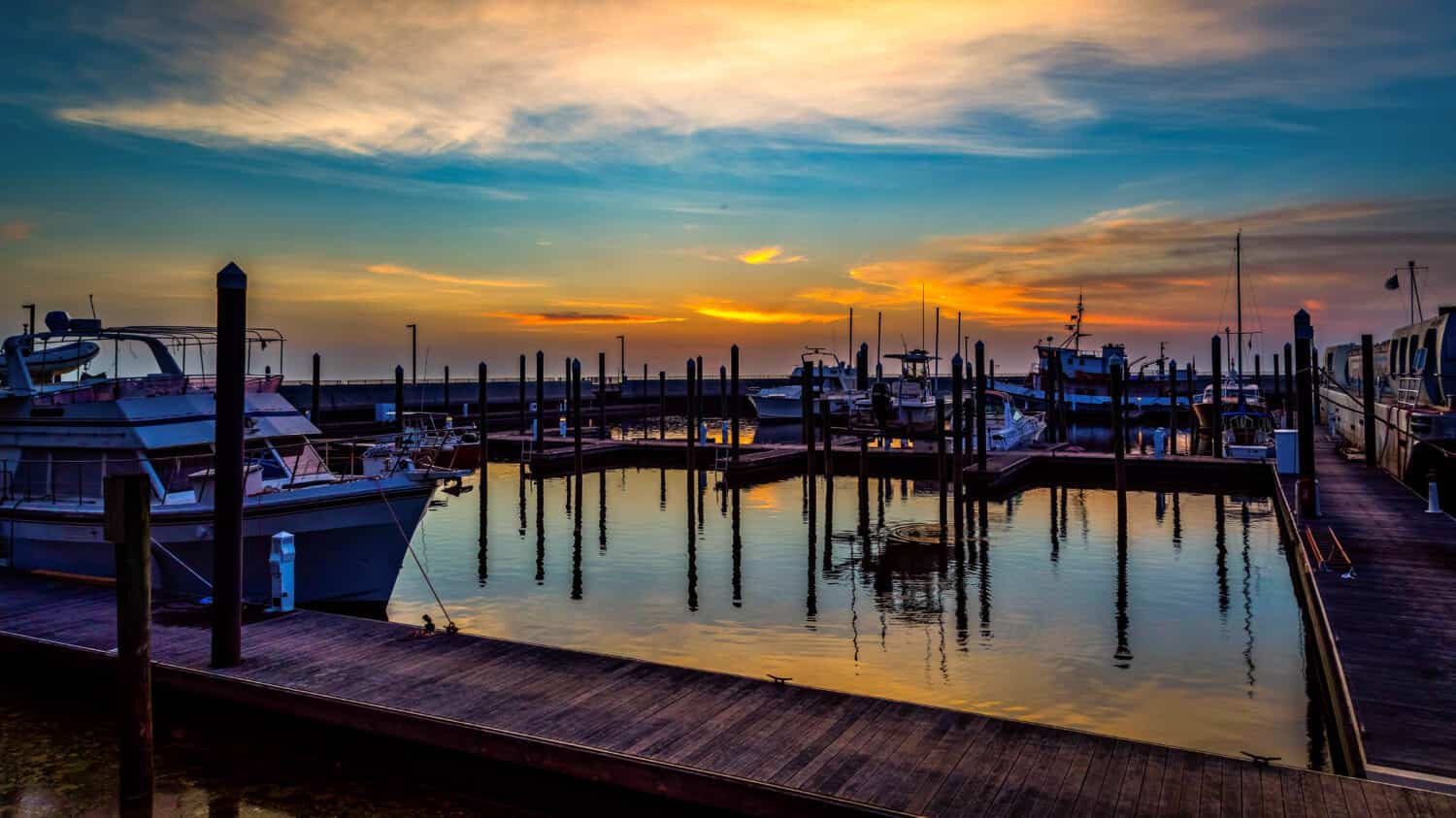
Lake Okeechobee battles against the growth of the blue-green algae.
©aarbois/Shutterstock.com
Southern Florida is home to the state’s largest lake, Lake Okeechobee, also known as the ‘Big O’ or Florida’s Inland Sea. Shaped as an approximative circle, this massive water body spans over 730 square miles (1,900 square kilometers).
But its size is only one of the remarkable features. The lake’s name comes from the Seminole Indian words “oki” (water) and “chubi” (big), hence “Big Water.”
Scientists believe it was formed nearly 6,000 years ago when the sea levels began to lower, creating a trough that eventually became this magnificent lake. Unlike many others, Lake Okeechobee is relatively shallow, with an average depth of only 9 feet (2.7 meters). Its shallowness has contributed to the growth of vast aquatic vegetation, fostering a thriving ecosystem and making it a hub for wildlife enthusiasts.
For visitors or locals seeking adventure, Lake Okeechobee won’t disappoint. The lake offers many recreational activities like boating, fishing, and birdwatching. And for those who enjoy cycling or hiking, the Lake Okeechobee Scenic Trail promises a mesmerizing experience.
This lake is also perfect for wildlife observation, being home to the American bald eagle, various fish species, white pelicans, and alligators. If you can enjoy a boating day on the lake, do not think about diving in for a swim. Lake Okeechobee is home to more than 30,000 alligators.
2. Lake George
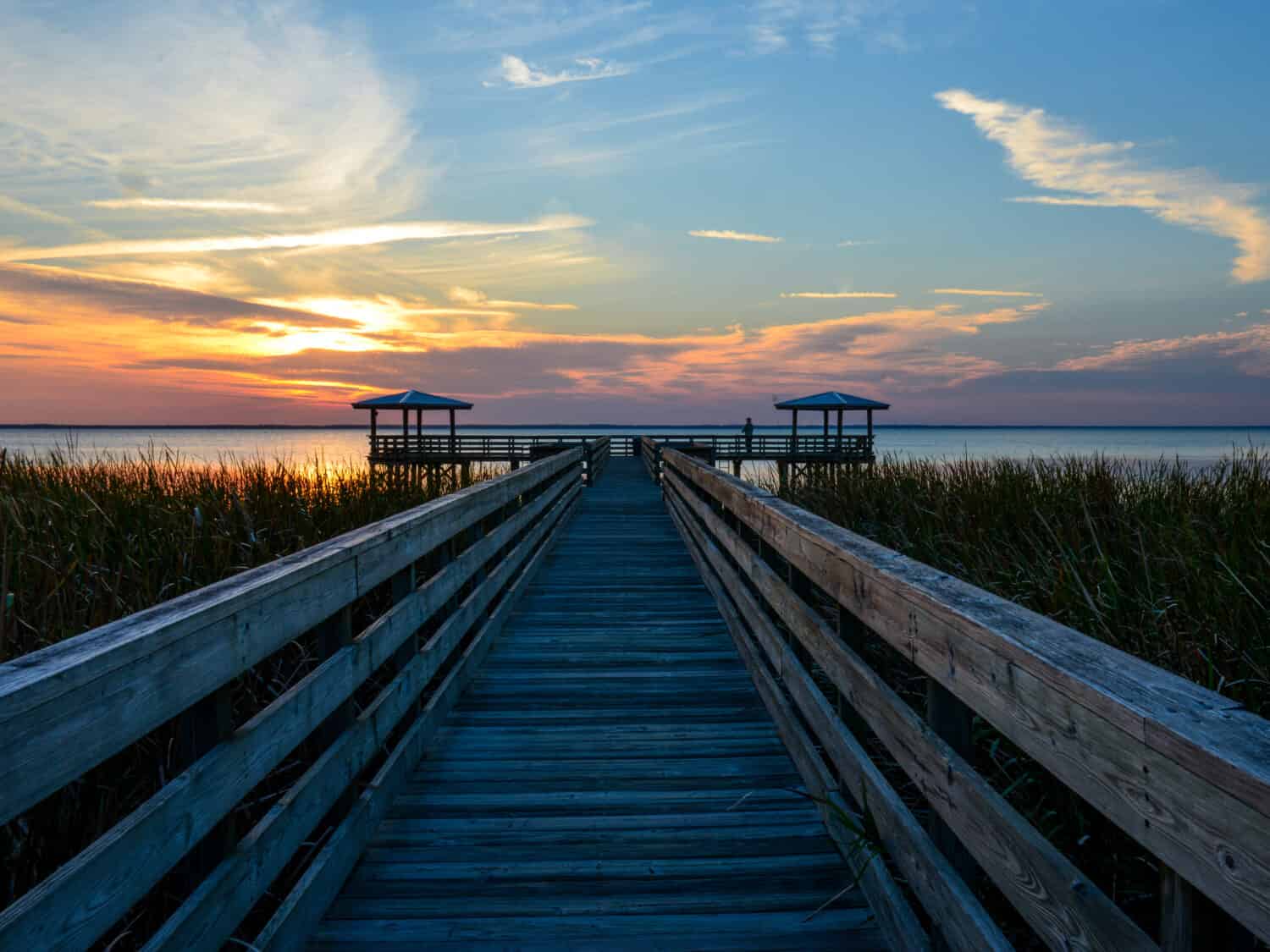
Lake George is also called Lake Welaka.
©sswetnam/Shutterstock.com
In the northern part of Florida is Lake George, the second-largest in the state. Spanning over 71.8 square miles (186.4 square kilometers), the lake is part of the magnificent St. Johns River system. It is also home to a unique geographical feature, salt springs. These springs infuse the lake with a slightly saline character, creating a distinct mix of fresh and saltwater species.
Long before European settlers arrived, the Timucuan Native American tribe inhabited the area. The lake owes its name to a British colonial governor, George Johnstone, who served in the mid-18th century. Over the years, it has seen the rise and fall of steamboat industries and is now a favorite spot to enjoy nature and water-based activities.
Lake George is perfect for fishing, kayaking, or powerboating. Due to the presence of alligators in these waters, use extreme precautions for swimming.
Due to its mildly saline waters, the lake hosts a unique blend of fresh and saltwater species. Blue crabs to manatees thrive along with otters and alligators. Eagles and ospreys are often seen soaring over the waters.
3. Lake Seminole

Lake Seminole is shared across Alabama, Florida, and Georgia.
©Norm Lane/Shutterstock.com
Spanning over 58.7 square miles (152 square kilometers), Lake Seminole snuggles into the juncture between Florida, Georgia, and Alabama.
Situated along the border of the Sunshine State, Lake Seminole is an artificial reservoir created by the Jim Woodruff Dam in 1957. This artificial lake resulted from a damming project that sought to generate hydroelectric power, assist with navigation, and serve as a source of recreation. But before its creation, the area was home to the Native American Seminole tribe, from whom the lake draws its name.
Lake Seminole is characterized by its unique topography. The lake is punctuated with islands, some of which are populated by stately trees while others serve as bird sanctuaries. Renowned for its bass fishing, thanks to the abundance of largemouth, smallmouth, and spotted bass, Lake Seminole is a paradise for fishing enthusiasts seeking the thrill of that perfect catch.
Along with fishing, boating is a popular activity. Be it a gentle sail, a vigorous row, or a high-speed motorboat ride, the lake offers an array of boating experiences.
Like the other Floridian lakes, Lake Seminole is a haven for wildlife watching. The lake is home to a myriad of bird species, including bald eagles, ospreys, and herons. In addition, deer, raccoons, turtles, and alligators are common sightings around the lake’s periphery.
4. Lake Kissimmee

Lake Kissimmee has a “cow camp” where visitors can learn about 1876-era Florida cowboys.
©johanrodriguezs/Shutterstock.com
Located in Central Florida, Lake Kissimmee, and its 54.61 square miles, is an undeniable haven for wildlife.
The lake once served as a vital waterway for the steamship industry in the late 19th and early 20th centuries. Nowadays, it plays a crucial role in providing a sustainable habitat for an array of flora and fauna.
The lake’s marshy edges and various islands create ideal conditions for nesting birds — while the open water is a playground for various fish and waterfowls. Herons and egrets thrive in the air, while largemouth bass, bluegill, and catfish live in the waters alongside alligators.
With its geography, the lake is an ideal spot for recreational activities. Visitors can sunbathe, explore the lake, fish, or observe the thriving wildlife.
5. Lake Apopka
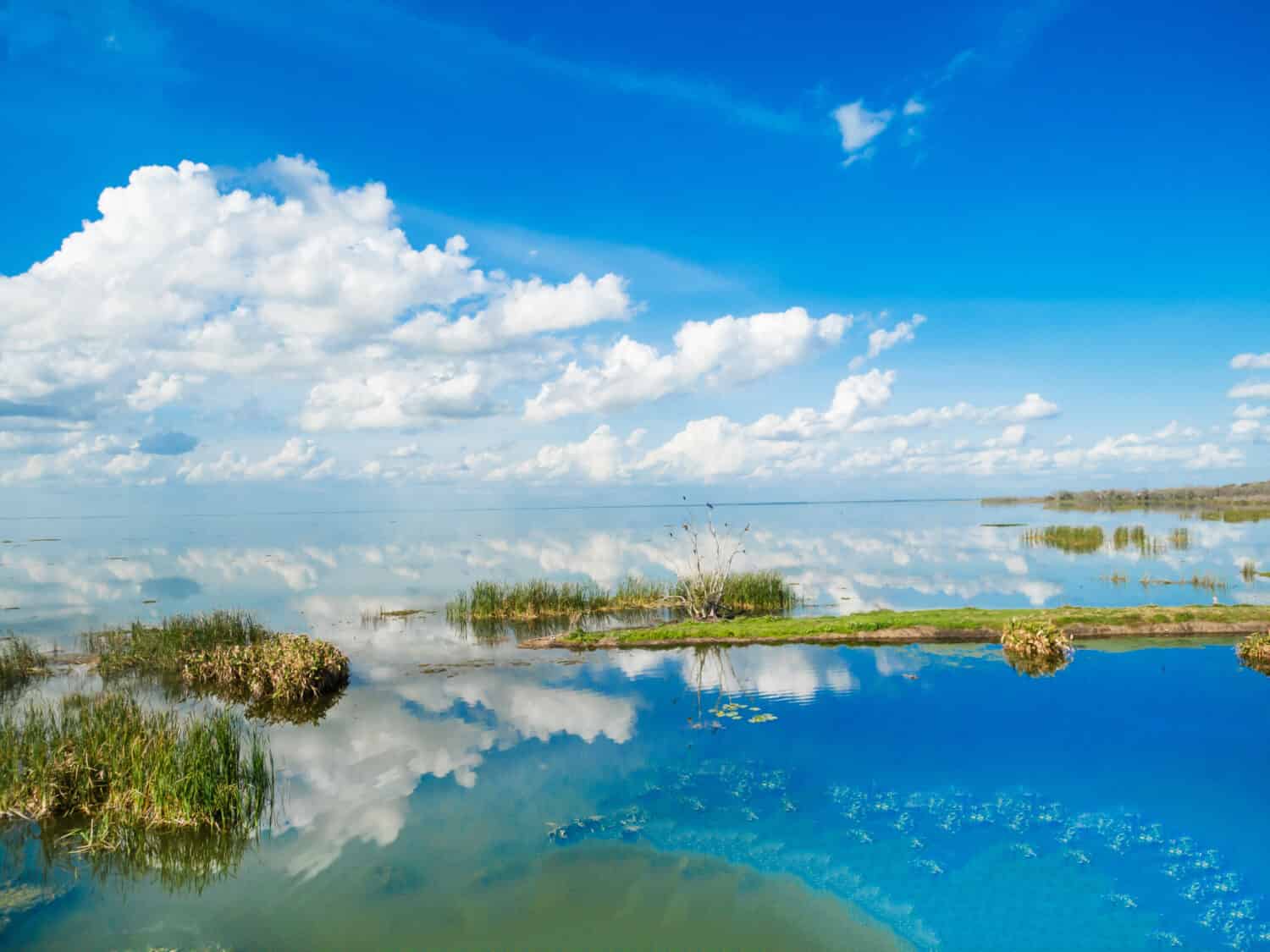
Apopka comes from the Seminole word Ahapopka meaning “potato-eating place.”
©Timothy OLeary/Shutterstock.com
Nestled between Orlando and the town of Apopka, this lake is a favorite spot for city getaways. It covers 48.3 square miles (125 square kilometers), with its northern region embraced by swamps.
Once considered Florida’s most polluted large lake, Lake Apopka has undergone extensive restoration efforts to bring it back to life. In the 1940s, the lake was used for dumping agricultural and industrial waste, causing severe degradation in water quality and harm to its aquatic ecosystem. Thanks to the Lake Apopka Restoration Act of 1985, the lake began its journey toward recovery.
Lake Apopka’s wildlife is now thriving. It is home to over 300 species of birds, including the majestic bald eagle and the elusive snail kite, and various aquatic species, such as the bluegill, crappie, and largemouth bass. But it is also home to a wide array of reptiles, including alligators, numerous turtle species, and mammals like raccoons, river otters, and bobcats. To discover it all, the Lake Apopka Wildlife Drive is a scenic 11-mile drive that winds around the lake’s northern shores.
Boating and canoeing are popular activities, as well as hiking and mountain biking. Plus, the lake offers world-class fishing, with many fishing events throughout the year.
6. Lake Istokpoga

It is believed that in the early 1800s, many Native Americans died while crossing the lake and fell victim to whirlpools or alligators.
©Brandon Noel/Shutterstock.com
Stretching across 42.7 square miles (108 square kilometers) of Highlands County, Lake Istokpoga is home to waters bustling with aquatic life, making it a haven for fishing enthusiasts. Its shallow depth — between 4 to 10 feet (1.2 to 3 meters), contributes to its rich biodiversity.
Lake Istokpoga owes its name to the Seminole Indians, with Istokpoga meaning “people have died here.” Evidence suggests that it served as a battleground during the tumultuous Seminole Wars.
Today, thanks to its diverse ecosystem, the lake is home to a myriad of species. The aquatic life is vibrant and plentiful, from bluegill to crappie and largemouth bass. The various and in abundance fish species make it a haven for anglers. Bird watchers delight at the sight of bald eagles, herons, and ospreys that frequent the area.
The lake also offers various recreational activities; with campings and boat ramps, the lake has everything for a nature getaway. If going on a boating trip, be careful, the shallowness of Lake Istokpoga can trap oversized boats.
7. Lake Tohopekaliga
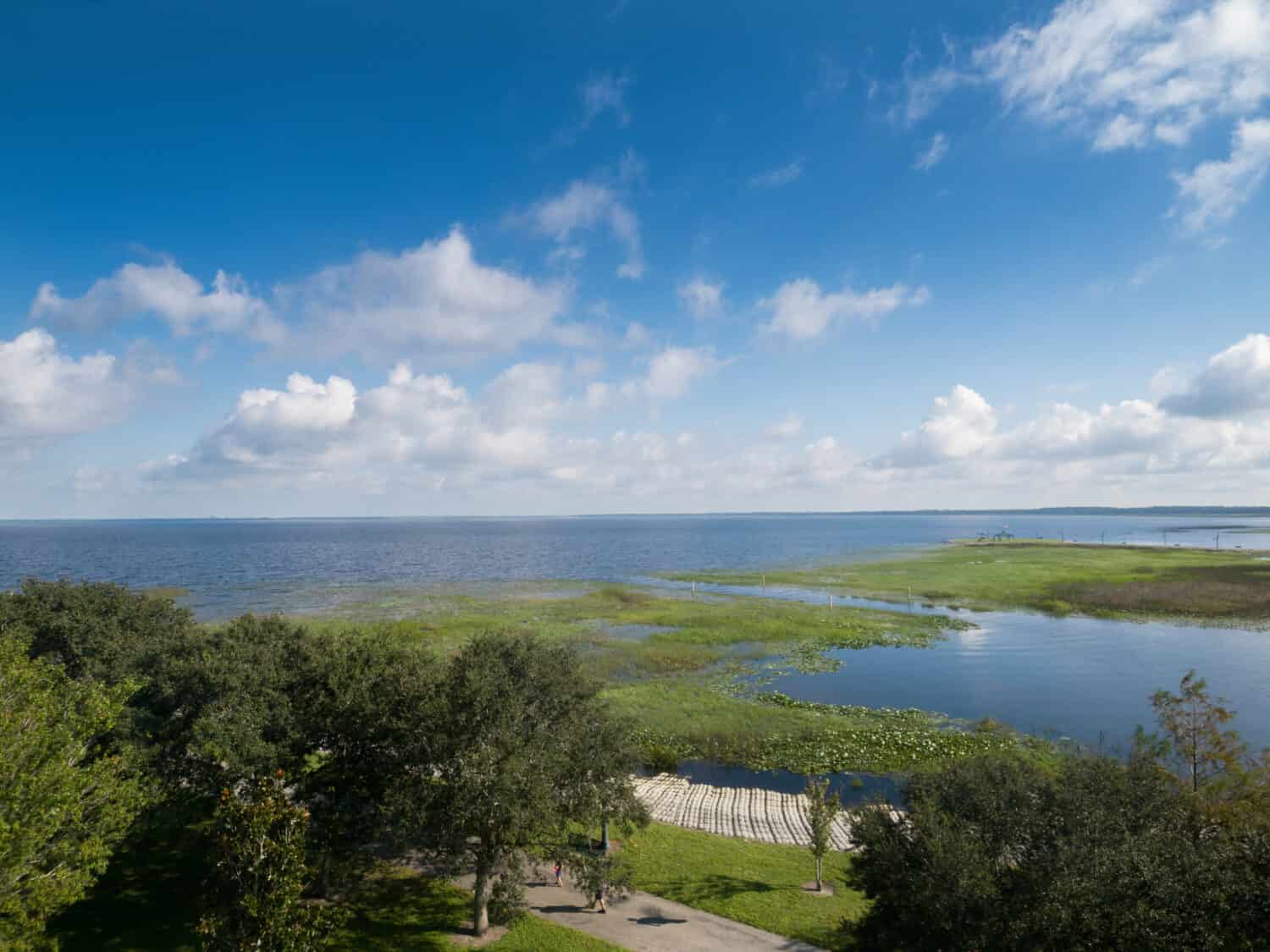
Lake Tohopekaliga is the primary inflow of Shingle Creek, which rises in Orlando.
©Timothy OLeary/Shutterstock.com
Often referred to as “Toho,” Lake Tohopekaliga serves as a magical backdrop for the vibrant city of Kissimmee. As the ninth largest lake in Florida, Lake Tohopekaliga spans over 35.5 square miles (91.9 square kilometers).
This lake is also part of the Upper Kissimmee River Basin, a significant component of the Everglades’ headwaters.
Tohopekaliga comes from the Seminole Indians, meaning “We will gather together here.” It is believed to come from two words, “tohopke” (meaning fenced area or fort) and “lika” (meaning a gathering site).
As from the meaning of its name, Lake Tohopekaliga still brings communities together. The lake is renowned for its bass fishing and holds the record for the heaviest bass ever caught in Florida waters. Plus, visitors can enjoy boating, kayaking, and paddleboarding. And if you prefer to stay on land, the lake offers various nature trails.
Like the other lakes in Florida, an extensive array of wildlife calls Lake Tohopekaliga home, from the elusive American alligator to various bird species such as ospreys and bald eagles.
8. Crescent Lake
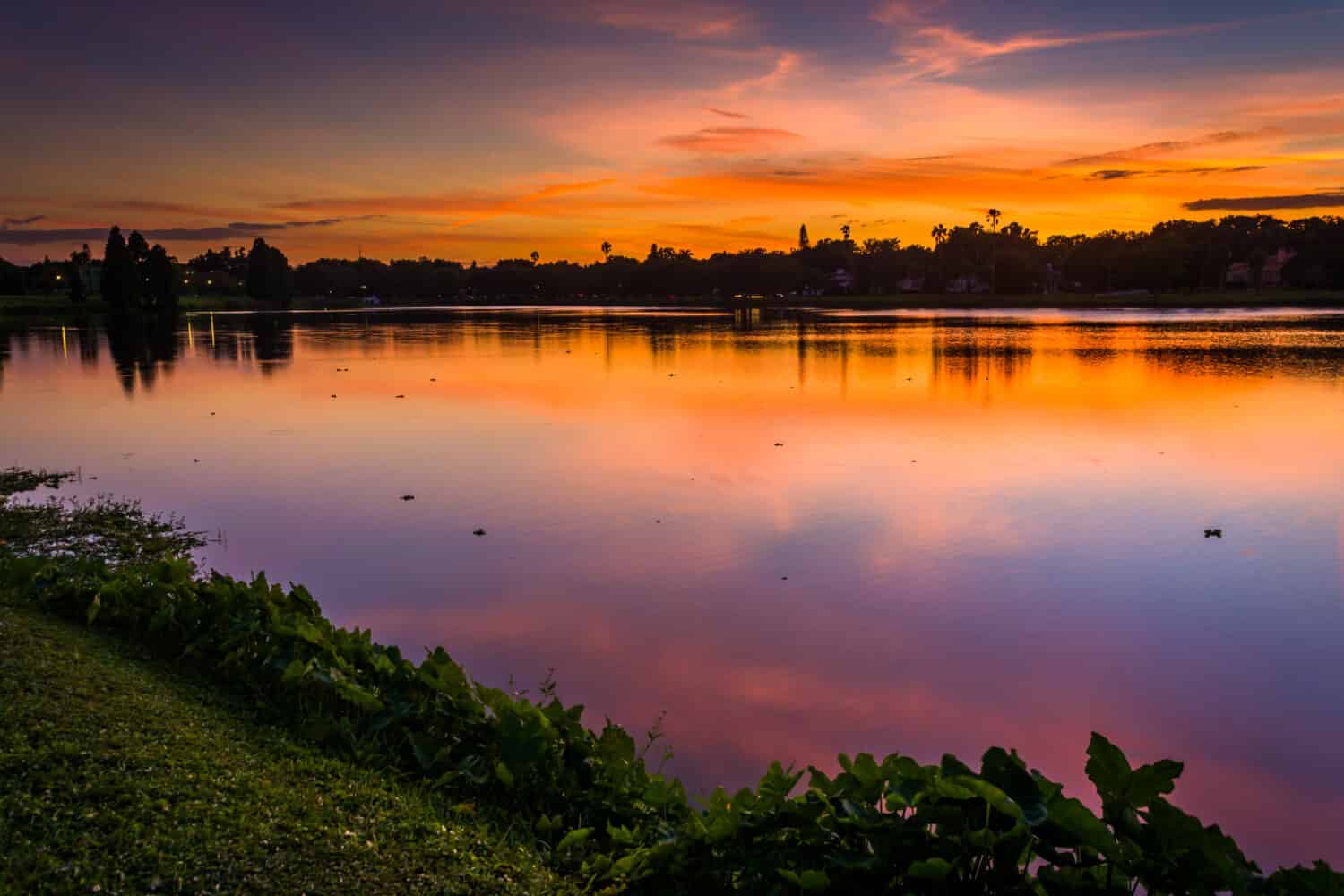
Annually, Crescent City hosts the Catfish Festival the first weekend in April.
©Jon Bilous/Shutterstock.com
Crescent Lake is named for its unique lunar shape and covers 24.9 square miles (64.6 square kilometers). The lake holds a rich history and cultural heritage from the Timucuan Indians who previously lived in the area. Thousands of years later, steamboat enthusiasts in the late 19th century were captivated by the lake’s enchanting allure. Crescent Lake, fed by Haw Creek and other smaller tributaries, is vital to Florida’s intricate water system.
The lake is a haven for recreational activities. Anglers can cast their lines for various fish species, including bluegill, crappie, and largemouth bass. For water-based activities, boating, water skiing, and wildlife viewing are popular activities. And for those who prefer land-based adventures, camping, and hiking are available along the shoreline.
True to Florida’s reputation for abundant wildlife, Crescent Lake is home to several species of birds, amphibians, reptiles, and mammals. Keep your eyes peeled for ospreys, egrets, alligators, otters, and even the elusive bobcat.
9. Lake Harris

Lake Harris waters can become rough during high winds.
©Roger Epps/Shutterstock.com
Embraced by the Central Highlands of Florida, the serenity of Lake Harris stands as an enticing retreat for boaters and nature lovers. Lake Harris stretches over 21.5 square miles (55.8 square kilometers).
Crafted by nature’s hand over centuries, Lake Harris was born to the receding waters of a vast inland sea. The lake took its current name in honor of Ebenezer Jackson Harris, a pioneer settler who moved to the region in the mid-1800s.
Lake Harris is also part of the Harris Chain of Lakes — an intricate waterway system spanning Lake, Orange, and Marion Counties. It includes eight primary lakes, interconnected with several canals and rivers.
The lake boasts a diverse array of flora and fauna. Alligators, bluegills, ospreys, and white-tailed deer are often seen in and around the lake.
Lake Harris is renowned for its fishing; local bass fishing tournaments are held on a weekly basis. The lake is also a stop on the ESPN B.A.S.S. Tournament Trail, with its fishing highlighted on many outdoor TV shows.
Alongside fishing, Lake Harris is also known as a boater paradise. With multiple marinas and public boat ramps, it is the perfect location for a day on the water.
10. East Lake Tohopekaliga

This lake is a smaller sister to Lake Tohopekaliga.
©Hank Erdmann/Shutterstock.com
East Lake Tohopekaliga is often referred to as East Lake Toho. Located east of Lake Tohopekaliga, this lake is shaped like a circle and stretches over 18.7 square miles (48.4 square kilometers).
This lake shares a bond with the native tribes that once thrived here. It was an essential source of food and transport for the Seminole Indians and still holds historical significance today.
This lake has a thriving biodiversity, with alligators, bald eagles, herons, and ospreys. Anglers from around the world come for its renowned bass fishing. The lake’s calm waters are also ideal for boating, kayaking, and observing wildlife.
11. Lake Talquin
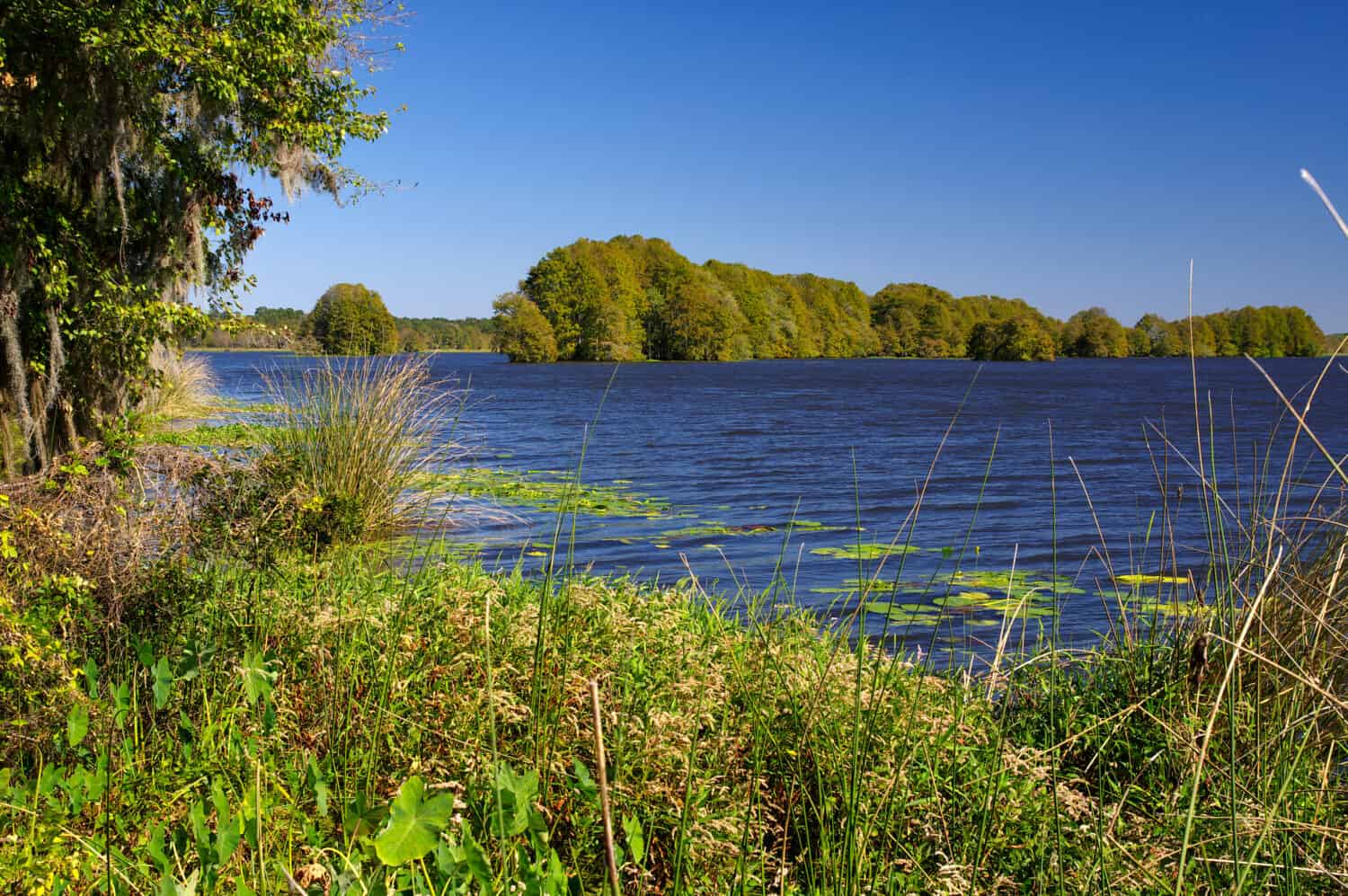
The reservoir was first constructed for hydroelectric power generation.
©Rafal Michal Gadomski/Shutterstock.com
Lake Talquin, with its size of 16.9 square miles (43.7 square kilometers), is a reservoir nestled between Gadsden and Leon counties. This reservoir was formed in 1927 when the Jackson Bluff Dam was constructed on the Ochlockonee River to produce hydroelectric power. Named after the two nearby cities — Tallahassee and Quincy — this lake has unique characteristics.
Unlike most Florida lakes, Lake Talquin boasts a considerable depth, averaging 15 feet (4.6 meters) and plunging to nearly 40 feet (12 meters) at its deepest. Its water is typically dark due to the tannins leached from the surrounding vegetation and swamps. The lake is surrounded by steep bluffs covered with a lush mix of hardwoods and pines. The 10,000-acre forest around the lake provides ample opportunities for hiking and birdwatching.
Also, Lake Talquin is now teeming with an impressive array of fish and bird species, making it a paradise for any nature enthusiast. Home to alligators, bald eagles, white-tailed deer, and even squirrels, Lake Talquin, is a haven for anyone who wants to observe the wildlife.
Aside from wildlife watching, there are plenty of fun activities here. It is the perfect spot for fishermen with ample fish species and hikers with multiple trails in the surrounding forests. Visitors can always relax with a boat day on the lake’s serene waters.
12. Lake Monroe

Lake Monroe is one of the lakes that make up the St. Johns River system.
©Javier Cruz Acosta/Shutterstock.com
Nestled in the heart of Florida, Lake Monroe has a surface area of 15.06 square miles (39 square kilometers). Its origins can be traced back to the Seminole Wars of the 19th century.
Lake Monroe’s topography is as varied as its history. To the north, south, and west, it is flanked by developed lands and cities. To the east, the lake is enveloped by lush wetlands and swamps — the home of an array of flora and fauna.
Visitors can expect to see majestic birds like the bald eagle, heron, and snail kite. Anglers can fish the bass, crappie, or bluegill while trying to spot Florida’s iconic alligators.
Along with wildlife watching and fishing, visitors can also enjoy boating on Lake Monroe’s serene waters. Plus, the lake offers nearby historical landmarks like the St. Johns River Lighthouse for a dose of history.
13. Lake Griffin
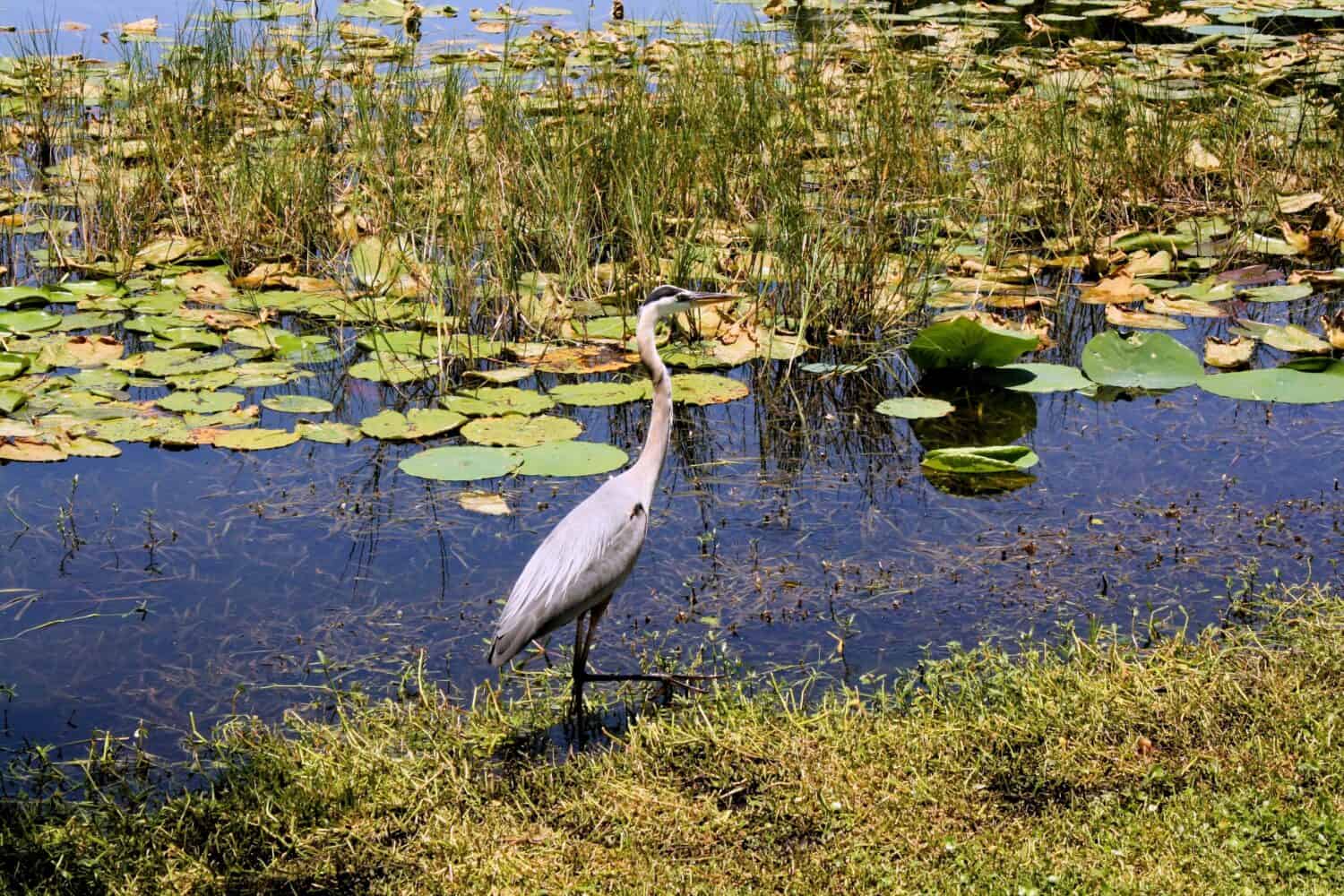
Large fish and bird populations settle around Lake Griffin.
©TAMMY M JOHNSON/Shutterstock.com
Lake Griffin, with its 14.8 square miles (38.3 square kilometers), is the last lake in the Harris Chain of Lakes.
In the 1800s, steamboats would traverse its waters, carrying goods and passengers. The lake even served as a significant route during the Second Seminole War. Today, antique boats occasionally grace the lake’s surface.
The lake is home to large populations of bluegill, black crappie, and largemouth bass, promising exciting fishing expeditions. Especially with the largemouth bass, known for their fighting spirit, are always a challenge to catch.
Lake Griffin also hosts an array of water sports. If you can enjoy some serene canoeing, the lake is renowned for its adrenaline-charged jet skiing.
But what adds to the magic of Lake Griffin is the magnificent Lake Griffin State Park surrounding it. Majestic oak trees mark the park, some estimated to be over 400 years old. With its lush forests, Lake Griffin State Park is home to various wildlife, including squirrels, raccoons, and a myriad of bird species.
14. Lake Eustis
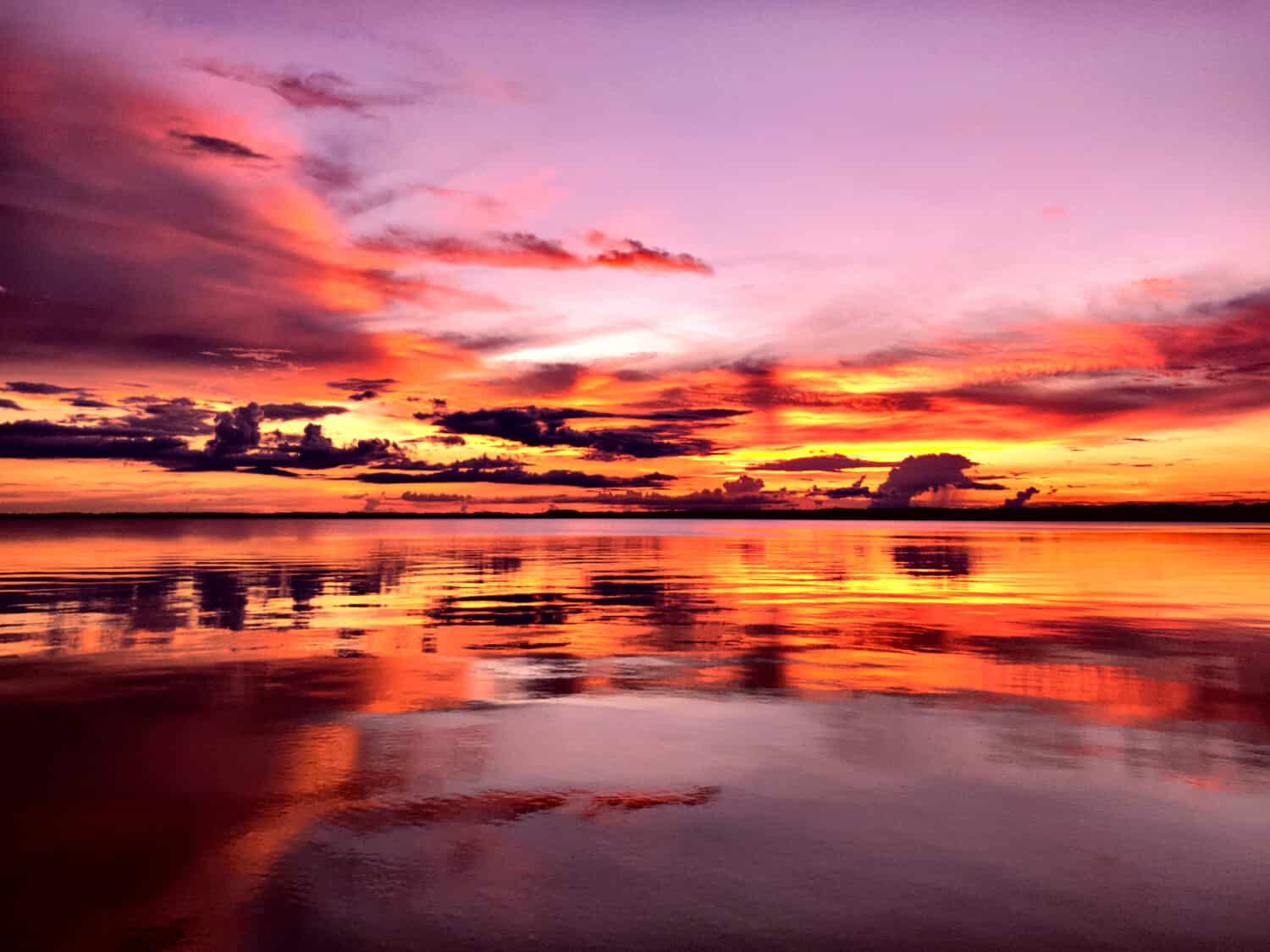
In the lake’s northwestern corner, a backwater area known as “Gator Hole” is a popular spot to catch bass.
©Amanda Adnama/Shutterstock.com
Nestled in Central Florida, this lake has a surface area of 10.9 square miles (28.3 square kilometers) and forms a vital link in the Harris Chain of Lakes.
Connected to Lake Harris by the mile-long Dead River and to the St. Johns River via the Haines Creek and the Dora Canal, it forms an intricate water network.
The lake was named after Colonel Abraham Eustis — a prominent figure in the Second Seminole War.
Like the others in the Harris Chain of Lakes, Lake Eustis is ideal for fishing, boating, and observing the thriving wildlife. This lake is mainly known for its birdwatching possibilities.
These lakes offer an array of activities, from adventurous boating and fishing to tranquil birdwatching and wildlife observation. They serve as an oasis of biodiversity, hosting many species and providing a vital habitat for the state’s flourishing wildlife. Plus, they play a crucial role in maintaining the intricate balance of the local ecosystem.
Each lake’s unique geography, history, and wildlife contribute to the rich array of Florida’s natural landscape.
Summary of the 14 Largest Lakes in Florida
| Rank | Lake | Counties | Area (mi²) | Maximum depth (feet) |
|---|---|---|---|---|
| 1 | Lake Okeechobee | Glades, Hendry, Martin, Okeechobee, Palm Beach | 730 | 12 |
| 2 | Lake George | Putnam, Volusia | 71.8 | 12 |
| 3 | Lake Seminole | Decatur (GA), Gadsden, Jackson | 58.7 | 30 |
| 4 | Lake Kissimmee | Osceola, Polk | 54.6 | 12 |
| 5 | Lake Apopka | Lake, Orange | 48.3 | 18 |
| 6 | Lake Istokpoga | Highlands | 42.7 | 10 |
| 7 | Lake Tohopekaliga | Osceola | 35.5 | 13 |
| 8 | Crescent Lake | Flagler, Putnam | 24.9 | 10 |
| 9 | Lake Harris | Lake | 21.5 | 30 |
| 10 | East Lake Tohopekaliga | Osceola | 18.7 | 18 |
| 11 | Lake Talquin | Gadsden, Leon | 16.9 | 40 |
| 12 | Lake Monroe | Seminole, Volusia | 15.06 | 8 |
| 13 | Lake Griffin | Lake | 14.8 | 18 |
| 14 | Lake Eustis | Lake | 10.9 | 10 |
Thank you for reading! Have some feedback for us? Contact the AZ Animals editorial team.








